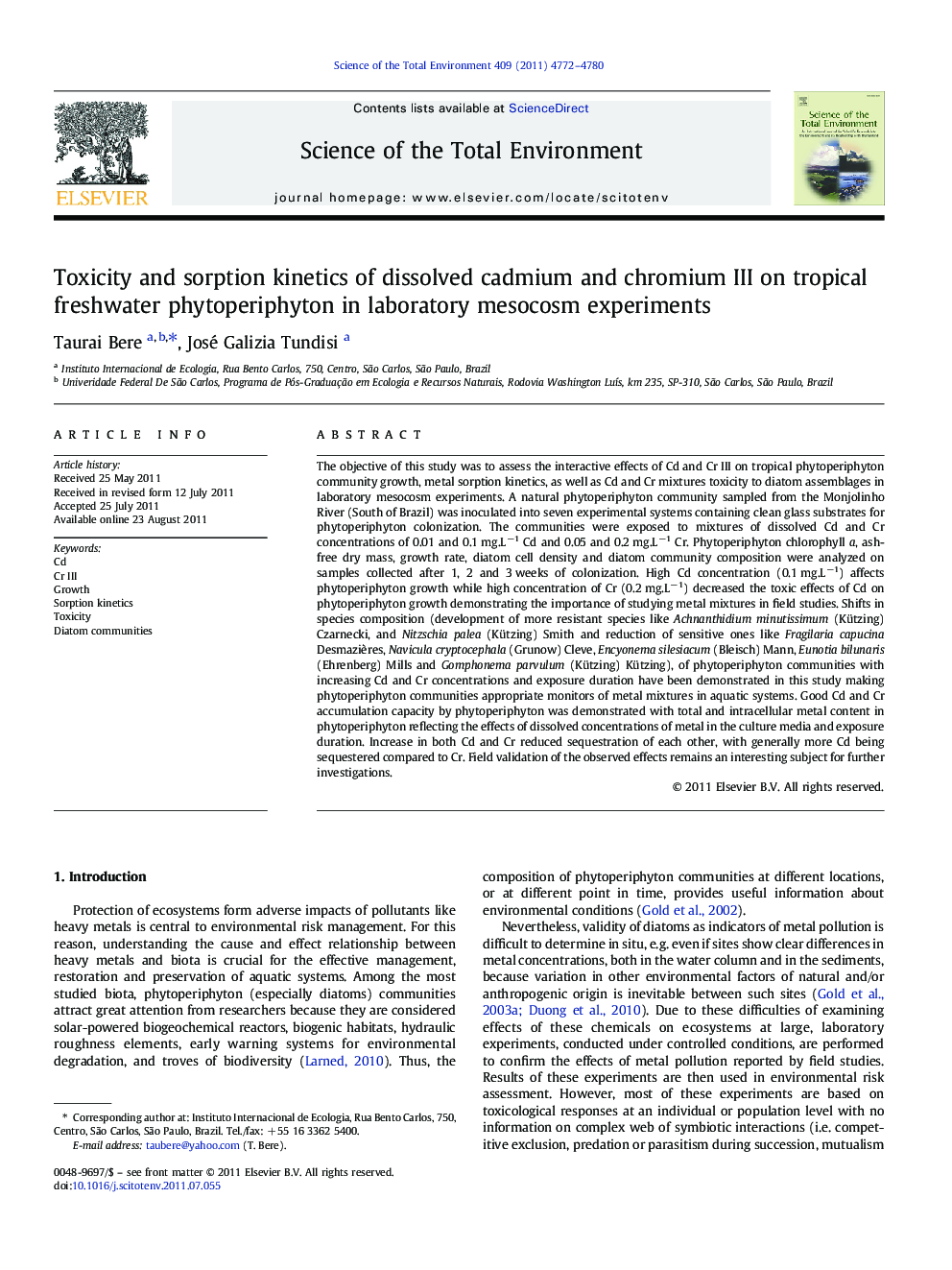| Article ID | Journal | Published Year | Pages | File Type |
|---|---|---|---|---|
| 4429966 | Science of The Total Environment | 2011 | 9 Pages |
The objective of this study was to assess the interactive effects of Cd and Cr III on tropical phytoperiphyton community growth, metal sorption kinetics, as well as Cd and Cr mixtures toxicity to diatom assemblages in laboratory mesocosm experiments. A natural phytoperiphyton community sampled from the Monjolinho River (South of Brazil) was inoculated into seven experimental systems containing clean glass substrates for phytoperiphyton colonization. The communities were exposed to mixtures of dissolved Cd and Cr concentrations of 0.01 and 0.1 mg.L−1 Cd and 0.05 and 0.2 mg.L−1 Cr. Phytoperiphyton chlorophyll a, ash-free dry mass, growth rate, diatom cell density and diatom community composition were analyzed on samples collected after 1, 2 and 3 weeks of colonization. High Cd concentration (0.1 mg.L−1) affects phytoperiphyton growth while high concentration of Cr (0.2 mg.L−1) decreased the toxic effects of Cd on phytoperiphyton growth demonstrating the importance of studying metal mixtures in field studies. Shifts in species composition (development of more resistant species like Achnanthidium minutissimum (Kützing) Czarnecki, and Nitzschia palea (Kützing) Smith and reduction of sensitive ones like Fragilaria capucina Desmazières, Navicula cryptocephala (Grunow) Cleve, Encyonema silesiacum (Bleisch) Mann, Eunotia bilunaris (Ehrenberg) Mills and Gomphonema parvulum (Kützing) Kützing), of phytoperiphyton communities with increasing Cd and Cr concentrations and exposure duration have been demonstrated in this study making phytoperiphyton communities appropriate monitors of metal mixtures in aquatic systems. Good Cd and Cr accumulation capacity by phytoperiphyton was demonstrated with total and intracellular metal content in phytoperiphyton reflecting the effects of dissolved concentrations of metal in the culture media and exposure duration. Increase in both Cd and Cr reduced sequestration of each other, with generally more Cd being sequestered compared to Cr. Field validation of the observed effects remains an interesting subject for further investigations.
► We investigated toxicity and sorption kinetics of Cd and Cr III on periphyton communities. ► Hormesis recorded with Cr has antagonistic effects of toxicity of Cd. ► Changes in community composition recorded. ► Good metal accumulation capacity demonstrated. ► Biofilms dimed appropriate monitors of metal pollution in aquatic systems.
